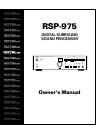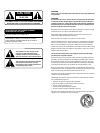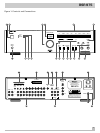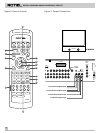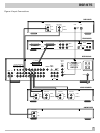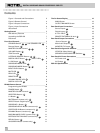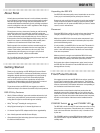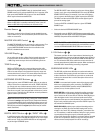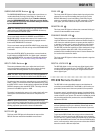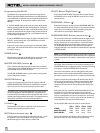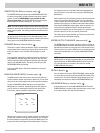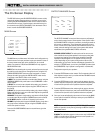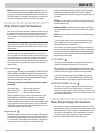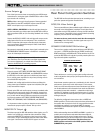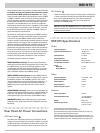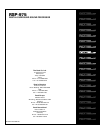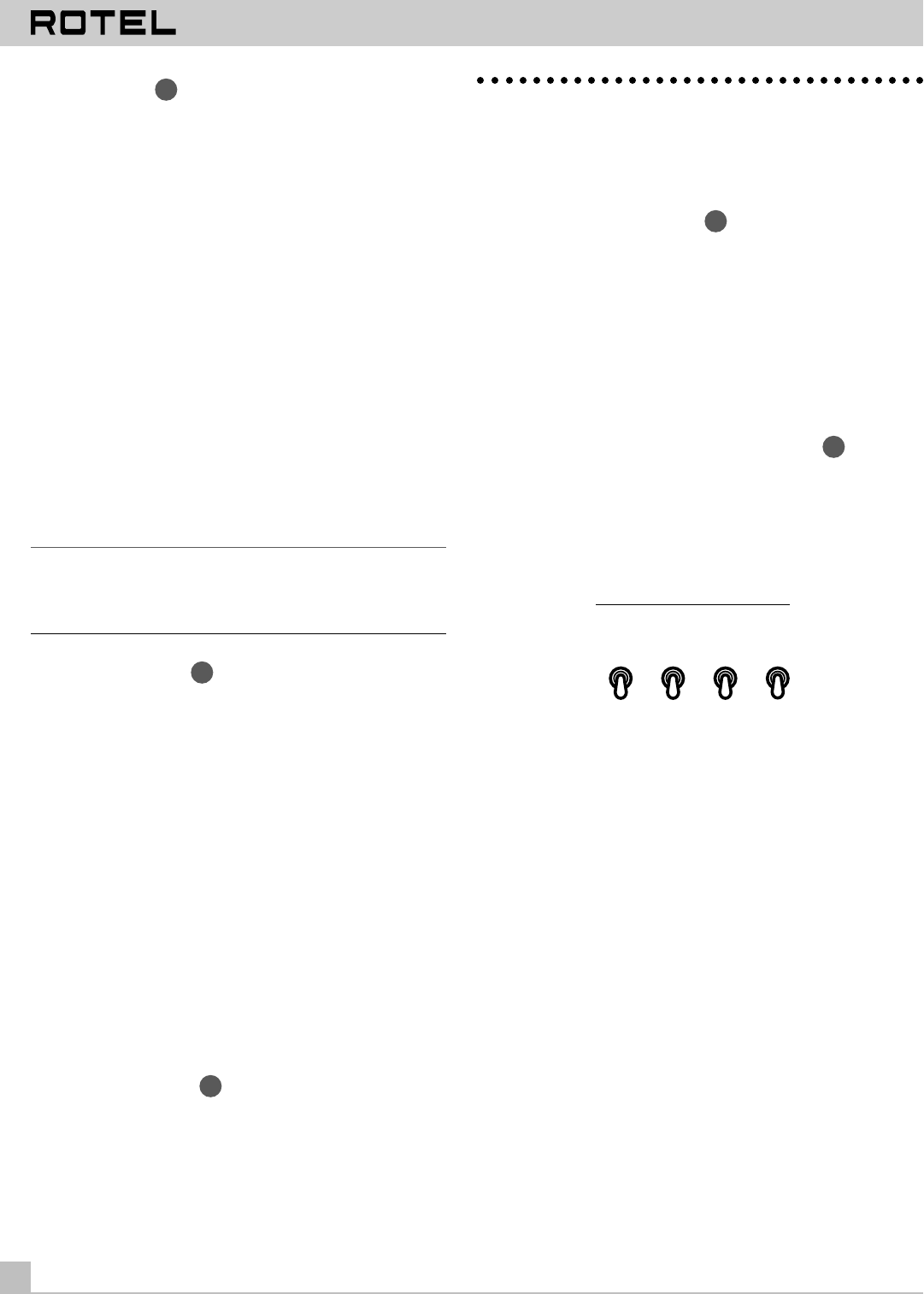
DIGITAL SURROUND SOUND PROCESSOR RSP-975
14
Source Outputs
26
Four of the input sources have corresponding sets of RCA output
connections for routing the signal of the RSP-975 to audio or video
tape recorders for recording.
TAPE provides a stereo pair of audio outputs. Connect standard
RCA cables from the LEFT and RIGHT outputs to the LEFT and
RIGHT record inputs on your audio tape recorder.
VIDEO 1, VIDEO 2, AND VIDEO 3 include left and right channel au-
dio plus composite coax video output from the RSP-975 to VCRs or
other components (VCR, etc.) for recording. Standard color coding
applies.
Connect the RSP-975's VIDEO 1 left and right audio outputs to the
audio inputs of the first source component. Then, connect the
VIDEO 1 composite video output to the video input of the same
source component. Repeat these steps for Video 2 and Video 3
connections, if necessary/
Once properly connected, whatever input signal is selected by the
LISTENING INPUT SOURCE buttons is available for recording at
any or all of the output connections.
NOTE: Only analog audio signals are available at the record out-
puts. Therefore, even if you choose to use digital signals from
your source components, you should also connect their analog
signals to the RSP-975, for recording purposes.
Main Audio Outputs
27
These six outputs (LEFT FRONT, CENTER FRONT, RIGHT FRONT,
LEFT SURROUND, RIGHT SURROUND, and SUBWOOFER) connect
the RSP-975's main audio output to a multichannel power ampli-
fier or multiple power amplifiers for the primary listening area via
six individual RCA-style jacks.
Standard color coding applies with black insets to distinguish
center channel and subwoofer outputs from left (white) and right
(red) Front and Rear outputs.
To hook up the RCA main audio outputs, connect a standard audio
cable from each output to the input of the amplifier channel that
will power the corresponding speaker. In a full home theater sys-
tem, you will need to make six different connections correspond-
ing to the six speakers (LEFT FRONT, CENTER FRONT, RIGHT
FRONT, LEFT SURROUND, RIGHT SURROUND, and SUBWOOFER).
It is important to make sure that you have the correct output con-
nected to the proper amplifier channel. Take your time.
MONITOR TV Output
21
The video output of the RSP-975 sends the video signal to your TV
monitor from an RCA-type composite video connection. Simply
connect the MONITOR TV output to a video input on your televi-
sion monitor, using a standard RCA composite video cable. What-
ever signal is selected on the RSP-975 will appear on screen.
Rear Panel Configuration Switches
The RSP-975 has five switches that must be set according to your
particular system configuration. Details follow:
NTSC/PAL Video Switch
23
There are two different video standards used in different parts of
the world. In the United States, broadcast TV and video compo-
nents adhere to the NTSC standard. In Europe, the PAL standard
is more common. These differ in their technical details (scanning
frequency, etc.) and are not interchangeable.
You must set the rear panel switch to match the video standard in
your country. If set incorrectly, the video signal sent to your TV
monitor will be unrecognizable.
SPEAKER CONFIGURATION Switches
19
There are four speaker configuration switches on the RSP-975’s
rear panel — CENTER (small/none/large), FRONT (small/large),
REAR (small/large), and SUB (on/off). These switches let you cus-
tomize the RSP-975’s main outputs to precisely match system con-
figuration and speaker capabilities.
SPEAKER CONFIGURATION
CENTER
SMALL
NONE
LARGE
FRONT
SMALL
LARGE
REAR
SMALL
LARGE
SUB
ON
OFF
These switches are crucial to proper system configuration and
must be adjusted so that you enjoy all the performance your sys-
tem can deliver.
Home theater speaker systems vary considerably in their size and
performance, particularly in their bass output. For this reason,
today’s surround sound processors feature elaborate logic which
can send thunderous bass information from movie soundtracks to
the speaker(s) best able to handle it – subwoofers and/or large
speakers. For optimum surround sound performance, it is neces-
sary to tell the RSP-975 what speakers your system includes and
what type they are.
The following configuration instructions refer to LARGE and
SMALL speakers. The size refers more to the bass performance of
the speaker than its physical size. A full-range speaker that has
extended bass response is considered LARGE. A compact
minispeaker with limited bass response or power handling is con-
sidered SMALL.
While understanding the terms LARGE and SMALL is useful, it is
probably more important to understand what these different
speaker types mean in terms of
system
performance. This will
help determine how you should configure your system. In a nut-
shell, the system will redirect bass information away from
SMALL speakers and send it to the LARGE speakers and/or the
SUBWOOFER in your system.



